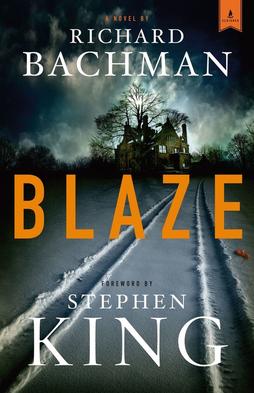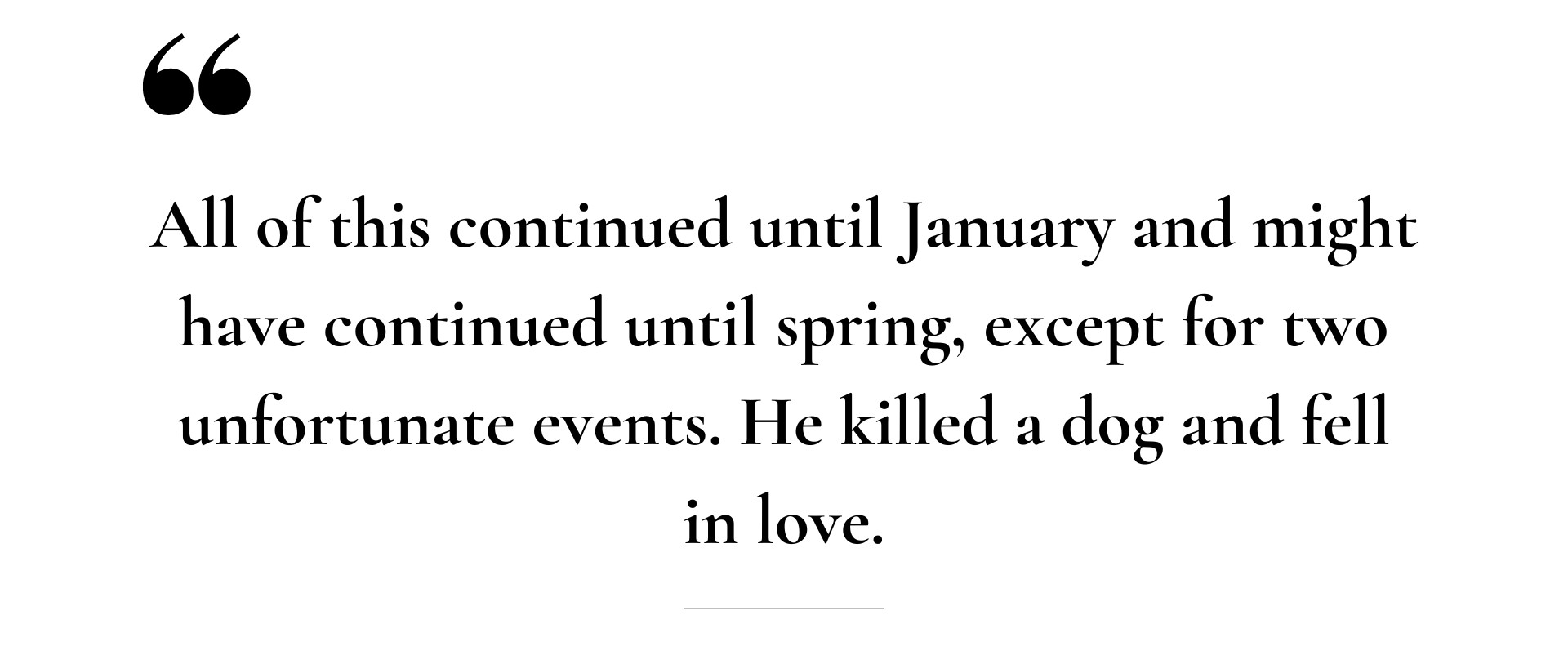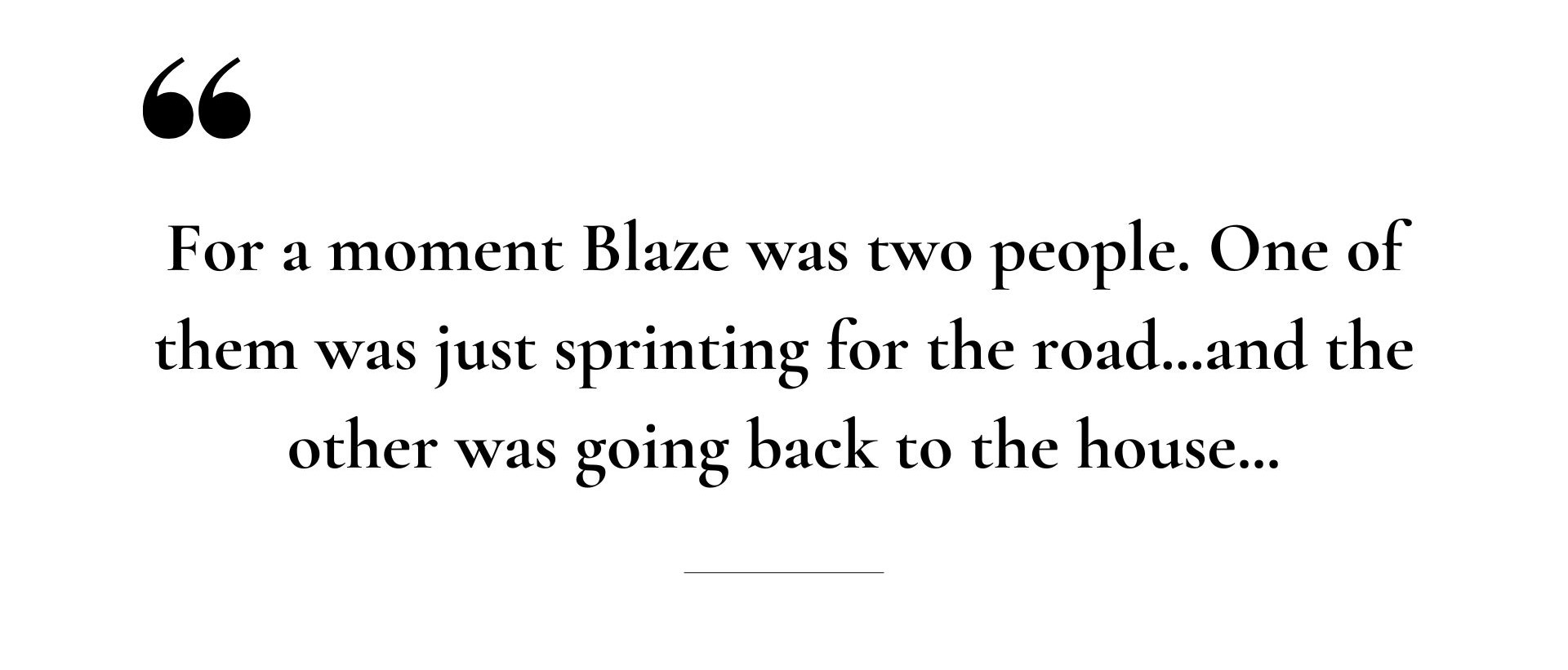Welcome back to Inconstant Reader, the feature column that explores Stephen King’s books in the order they were published — sort of! Warning: this article is ablaze with spoilers.
Sometimes they come back. After killing off his pseudonym Richard Bachman in 1985, following a bout of “cancer of the pseudonym, a rare form of schizonomia,” Stephen King subsequently ‘discovered’ several of his hitherto unpublished works.
Previously seen in 1996 with The Regulators, a twinner novel to Desperation, 2007’s BLAZE represents another of the ‘trunk’ novels. Originally offered to publishers by King around the same time as ‘Salem’s Lot (1975), King dusted it off in the new millennium for a potential Hard Case Crime novel in the vein of the (then) recent The Colorado Kid. Following a rewrite, and removing some of the 1973 references, it was released to an eager public.
The book follows Clayton Blaisdell Jr. (aka Blaze), a man with an intellectual disability who has lived a hard life. When we meet him, he has been led to a life of petty crimes, but steps up to the big time as he concocts to kidnap the infant son of millionaires. He receives instructions from his partner in crime George. The thing is, George has been dead for quite some time.
King unfurls the story in twin narratives. Between the kidnap plot marching towards its inevitably tragic conclusion, Blaze’s bond with baby Joe forces him to recall his past. Blaze’s early life began in a promising manner, until his father repeatedly pushed him down the stairs causing brain damage. Written off by teachers and carers, he falls in with some bad crowds, latches onto the kidnap scheme, and seals his fate.
BLAZE is a kind of crime noir where the anti-hero has had as many crimes committed against him as the ones he perpetrates. There’s no femme fatale per se, but George leads him further down a dark alley. Blaze is not just driven by him, but uses him to absolve his thoughts of complicity. There’s no doubt George once existed, but the reader might wonder how much of George is simply an unlocked part of Blaze’s broken brain. Just as the Hays Code always saw a comeuppance in noir films, Blaze too is ultimately killed to bring balance back to the god-fearing world.
This formatting tends to suggest that no person, whether defined as good or evil, is simply one thing. Blaze is a criminal, and commits some terrible deeds. Does this make him a bad person? Or is he the product of all those things that were done to him? This is the grey area that King really shines in, especially when it involves a series of childhood vignettes.
In my mind, this is where the book is at its most engaging. There’s a wonderful section where Blaze and a proto-George head on up to the big city of Boston to catch a game. There’s an unrestrained joy to it, like a smile before or after a good cry. This is unquestionably the core of King, and not the writer in the sometimes grimier ‘Bachman’ mode.
As such, the crime caper is almost secondary to this story told in flashback. The real fire inside Blaze is in his tragic backstory, showing that he is unmistakably the sum of his parts. After all, how can the convoluted plot of designing a money drop from a plane compete with Blaze fathering a child he never meets? That is heartbreaking.
Perhaps the greatest weakness here is King’s reliance on several fictional tropes about the intellectually disabled. King has been accused of ableism in the past, with critics pointing out Tom Cullen (The Stand), The Lawnmower Man, and John Coffey in The Green Mile as examples of a character trope he sometimes relies upon. ‘Duddits’ in Dreamcatcher, published in 2001, is another prime example of this, and more recently, Fairy Tale (2022) has met some of the same criticisms. So, while some of the 1973 has been polished out, the ‘r-slur’ is once again used one too many times. It’s a pattern, Mr. ‘Bachman,’ a stereotype that should have best remained in the trunk.
Segueing neatly away from this criticism, another reason to pick up the book is the short story MEMORY. Inspired partly by King’s own 1999 car accident, it concerns a man recovering from an accident that took his arm. Developing anti-social behaviour and memory issues, it eventually leads to a separation with his wife. His road to recovery comes in the unlikely form of a neighbour’s dog being hit by a car, and the memories he allows to come back helps him mercifully euthanise the pet. This story was expanded and reworked into Duma Key, which was to be King’s next novel.
So, BLAZE is something of an anomaly in King’s oeuvre. Not quite a crime novel, and not quite a childhood caper, it’s simply the portrait of a man. Parts of the story are fascinating, while others are just part of a tragic fabric. This quiet story may not set the world ablaze, but it’s fascinating to see how King’s style evolved over three decades in a single volume.
When Inconstant Reader returns, we’ll unlock the secrets of Duma Key. It’s a big tome, so I may be a while.







